Remember when waiting meant actually sitting with your thoughts or finding creative ways to stay busy? Before smartphones became extensions of our hands, we were masters at entertaining ourselves through life’s inevitable lulls. Those seemingly endless doctor’s office waits, long car rides, and rainy afternoons somehow passed without a single swipe or notification. Here’s a nostalgic look back at how we once filled those empty moments.
1. Thumbing Through Dog-Eared Magazines

Those waiting room stacks of well-worn National Geographics and Reader’s Digests served as communal entertainment for generations of patients. Every doctor and dentist office maintained this unofficial library of publications ranging from current issues to ones mysteriously dating back several presidential administrations. The “Humor in Uniform” and “Life in These United States” sections in Reader’s Digest provided reliable chuckles while waiting for your name to be called. If that wasn’t enough, Smithsonian Magazine writes that magazines were essential in shaping American history.
Opening a magazine someone else had just set down felt like joining an ongoing conversation with strangers who’d passed through before you. Outdated articles about “revolutionary new kitchen gadgets” or “upcoming summer blockbusters” from three years prior created unintentional time capsules of recent history. Even advertisements became fascinating when boredom set in, offering glimpses into products, prices, and fashion trends that had already begun their march toward obsolescence.
2. Mastering the Art of Daydreaming

We once cultivated rich inner lives during idle moments, letting our minds wander through elaborate scenarios without external stimulation. Those vacant stares out car windows weren’t signs of boredom but portals into imaginary worlds where we starred in our own mental movies. During long sermons or dull meetings, you could mentally redecorate your bedroom, replay conversations with improved comebacks, or envision yourself receiving standing ovations for talents you hadn’t quite developed. For anyone looking to indulge in this pastime, Verywell Mind writes that there are several benefits to daydreaming.
This unstructured mental time allowed for connections between seemingly unrelated ideas, often leading to creative solutions for problems you hadn’t consciously been addressing. The gentle boredom of empty moments created fertile ground for thoughts to germinate without the constant pruning of external information. Daydreaming wasn’t just an escape but a genuine skill that strengthened imagination muscles now rarely flexed in our notification-filled reality.
3. Perfecting Paper Fortune Tellers
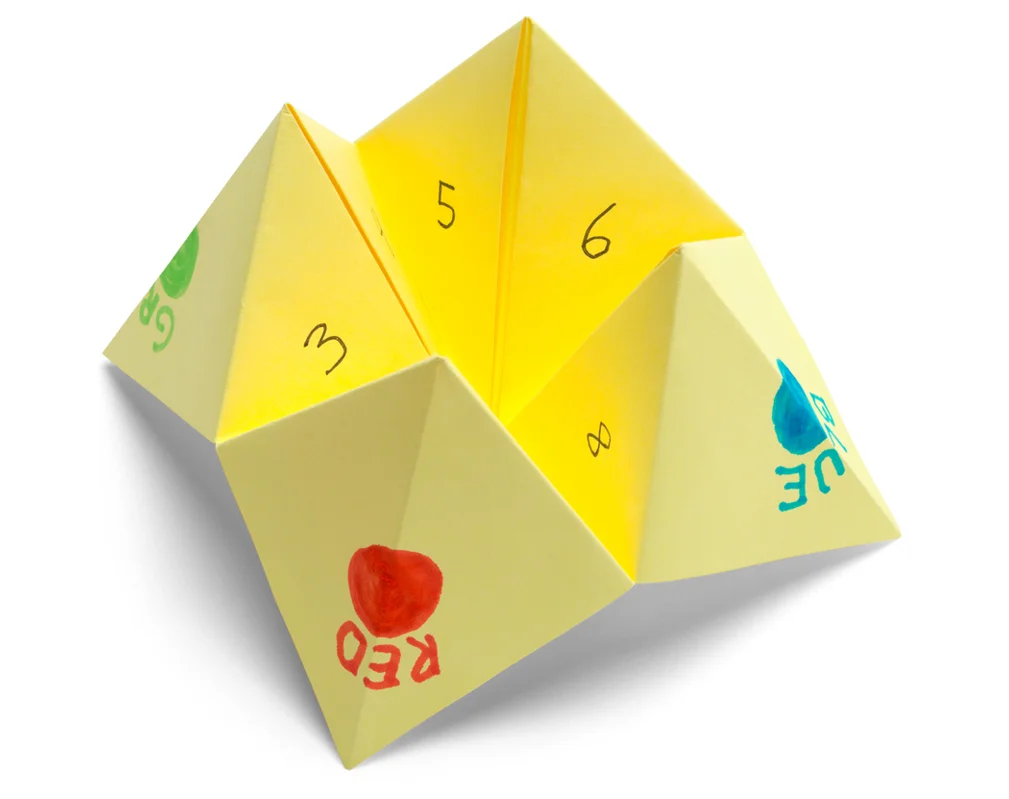
Those folded paper oracles with color-coded flaps contained the mysteries of the universe—or at least predicted who might ask you to dance at the next social. Creating them required precision folding and decision-making about which fortunes would be written inside, from optimistic predictions to playful insults. Hours disappeared into the making and using of these handheld fate machines, which often featured increasingly elaborate designs as your skills developed. Indeed, reports Mental Floss, these paper fads popped up and stuck in both the U.S. and England.
The fortune teller ritual—”pick a color,” “spell it out,” “choose a number,” “open here”—created suspense and interaction that no solo screen-scrolling could match. The fortunes themselves, often written in your best friend’s unmistakable handwriting, ranged from embarrassingly accurate to hilariously absurd. These simple paper constructions transformed waiting periods into opportunities for social connection, shared laughter, and the gentle thrill of peering into an uncertain future.
4. Car Trip License Plate Games

Those endless family road trips became bearable through competitive spot-the-license-plate challenges that turned highways into scavenger hunt venues. The Holy Grail—Alaska or Hawaii plates—could cement family legend status, warranting stops to record the sighting in the official family vacation log. Some families maintained elaborate scoring systems, with far-flung states earning higher points than neighboring ones.
The alphabet game variation—finding words on signs and license plates beginning with each letter from A to Z—created mounting tension as players became stuck on elusive letters like Q, X, and Z. These games transformed passive passengers into active observers, scanning the landscape for treasures that might otherwise go unnoticed. The shared excitement when someone spotted an unusual plate fostered family unity amid the confined quarters and occasional frustrations of long-distance travel.
5. Crafting Elaborate Friendship Bracelets
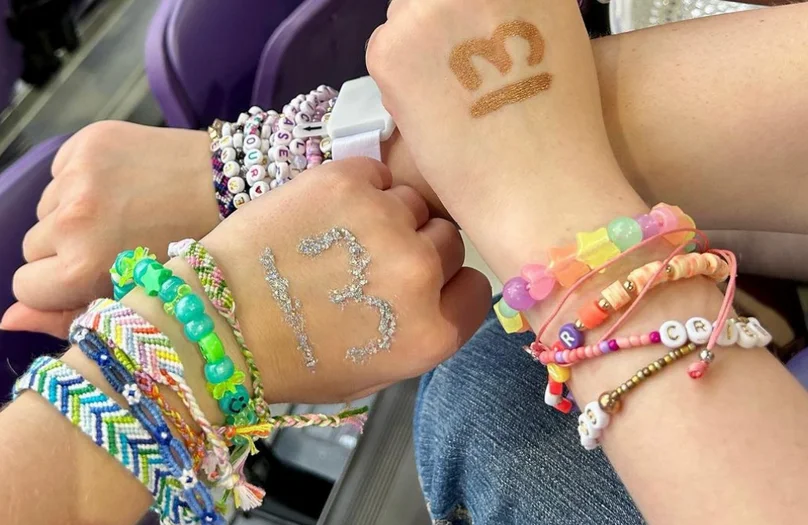
Those colorful woven threads wrapped around wrists represented social currency and artistic expression rolled into one portable hobby. Starting with simple patterns, ambitious bracelet-makers graduated to complex designs requiring mathematical precision and considerable patience. The steady rhythm of knotting threads created a meditative state that made time disappear whether sitting on beach towels, camp bunks, or bedroom floors.
Trading patterns became social interaction, with experienced crafters teaching novices the tricks to achieving tight, even knots or incorporating names into designs. The bracelets themselves, worn until they literally fell apart, served as physical reminders of connections in an era before digital friendship counters. Making someone a bracelet wasn’t a casual gesture but a significant investment of time and skill, tangible proof that you’d spent hours thinking about them.
6. Building Card Houses
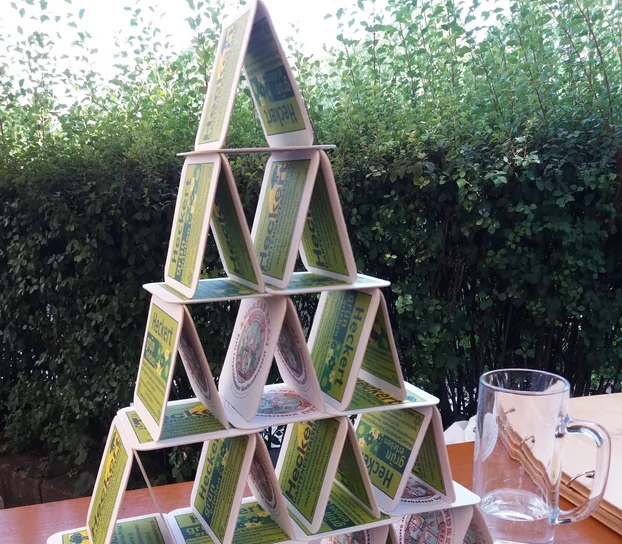
Those precarious structures of playing cards demanded steady hands, precise placement, and the emotional resilience to start over after inevitable collapses. Beginning with simple triangular structures, serious builders progressed to multi-story architectural wonders that commanded respect from siblings and visitors alike. The temporary nature of these creations taught early lessons about impermanence and the value of process over product.
The held breath as another card was carefully placed atop an already wobbly structure created tension no video game could match. When successful, you’d step back carefully, admiring your creation while simultaneously plotting how to add another level without disturbing what you’d already built. The heartbreak of watching your structure collapse from an errant breeze or someone walking too heavily across the room was followed by the immediate urge to try again with improved techniques.
7. Maintaining Pen Pal Correspondences
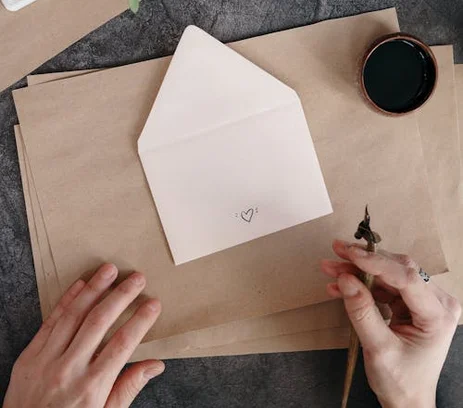
Those international friendships sustained through carefully composed letters and exotic stamps made the mailbox a portal to distant worlds. Finding your pen pal through school programs or specialized magazines began relationships that sometimes lasted decades, with your understanding of their country evolving beyond textbook descriptions. Each envelope brought tangible evidence of connection—handwriting that became as familiar as your own, occasionally supplemented with photos, small gifts, or pressed flowers.
The delayed gratification of waiting weeks for replies made each letter an event worth savoring rather than consuming instantly. Composing your responses required thoughtfulness about which aspects of your ordinary life might seem interesting to someone in another culture. These written relationships developed depth partly because of their limitations—without visual cues or instant clarification, you learned to express yourself precisely and to read between lines for cultural nuances.
8. Creating Mixed Tapes with Perfect Transitions
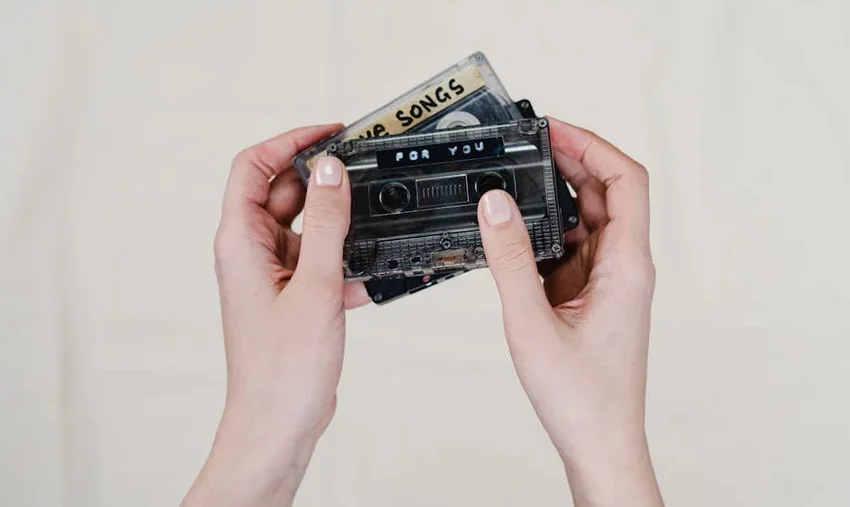
Those carefully curated cassettes represented hours of planning, timing, and artistic decision-making condensed into 90 minutes of musical storytelling. Sitting beside the radio with finger hovering over the record button, you’d wait to capture songs that perfectly expressed your feelings or showcased your sophisticated taste. The technical challenges—maintaining consistent volume between songs from different sources, avoiding DJ chatter, calculating remaining tape time—added to the sense of accomplishment when a tape was finally complete.
The sequencing itself was an art form, with considerable thought given to emotional arcs, complementary musical keys, and the crucial decision of which song deserved to open each side. Hand-decorated labels and personalized liner notes completed these analog playlists, often created as gifts that communicated messages too complex for direct expression. Each tape became a time capsule of musical moments, capturing not just songs but the feelings and circumstances that made them significant.
9. Perfecting the Skip of Flat Stones

Those smooth, palm-sized rocks discovered along shorelines became instruments for briefly defying physics through the perfect combination of angle, spin, and force. Finding the ideal stone was an art itself—flat but not too thin, with just enough weight to carry momentum across the water’s surface. The concentrated focus required to achieve maximum skips cleared minds more effectively than any meditation app.
The satisfying “plink-plink-plink” sound of successful attempts rewarded persistence and practice, while the immediate feedback loop of sinking stones encouraged technical adjustments. Friendly competitions arose naturally, with claims of “seven skips” or “past that floating log” creating legends that grew with each retelling. This simple interaction between hand, stone, and water connected generations through a timeless activity requiring nothing but nature’s provisions and human ingenuity.
10. Solving Newspaper Crossword Puzzles in Ink
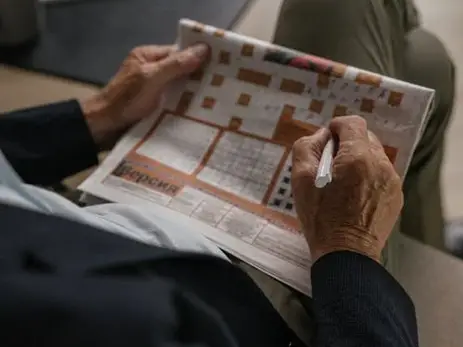
Those gridded challenges printed on newsprint became morning rituals combining coffee, concentration, and the daring use of permanent writing implements. Starting with Monday’s gentle clues and progressing through increasingly difficult puzzles culminating in Saturday’s brain-benders created a weekly rhythm of cognitive challenge. The Sunday puzzle, with its expanded grid and often clever theme, deserved special time set aside, perhaps in a comfortable chair with a bottomless cup of coffee.
Puzzle regulars developed relationships with specific editors and constructors, recognizing their trademark wordplay or thematic approaches. Obscure words entered your vocabulary specifically through their frequent appearance in crosswords—ETUI, ADIT, AGAR—becoming old friends despite their rarity in everyday conversation. The satisfaction of filling that final square transformed a messy, marked-up grid into evidence of perseverance, knowledge, and the willingness to think laterally.
11. Maintaining Detailed Photo Albums
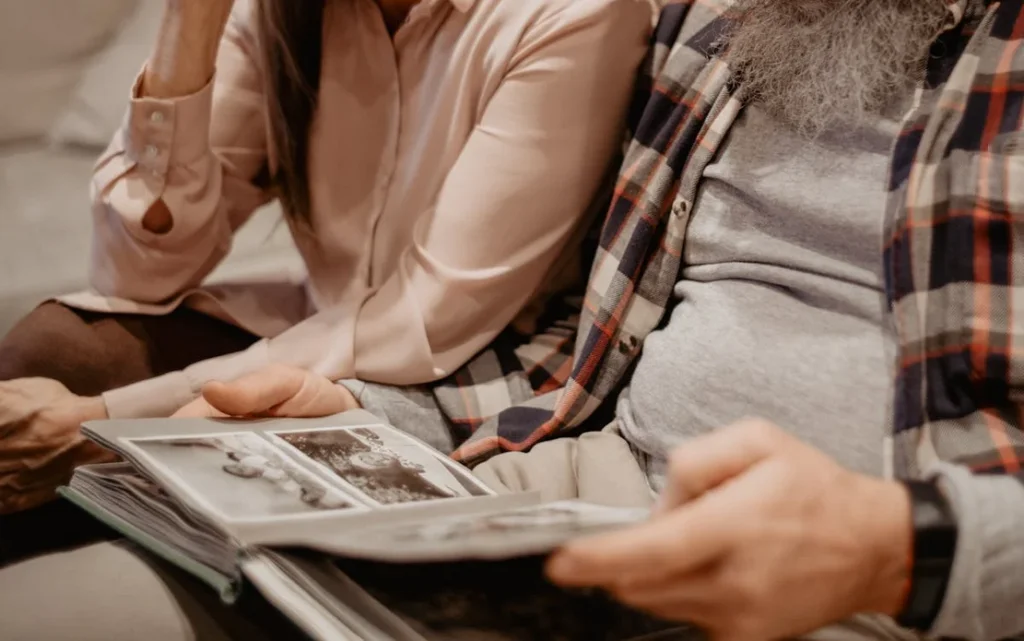
Those heavy books with adhesive pages preserved memories through careful selection and arrangement of physical photographs. The process itself was multi-staged—dropping off film, waiting days for development, the excitement of opening fresh packets of prints, then selecting the best for permanent display. Arranging photos in chronological or thematic order, adding captions with dates and names, and decorating pages with memorabilia transformed documentation into storytelling.
Creating these albums was an act of curating family history, deciding which moments deserved preservation and context for future viewers. Unlike today’s unlimited digital archives, film’s expense and limited exposures meant each photo represented a conscious choice to capture a particular moment. The physical turning of pages created natural pauses for stories to be told, questions asked, and connections made between past and present family members.
12. Pursuing the Perfect High Score on Pinball Machines

Those glowing mechanical marvels found in pizza parlors and arcades swallowed quarters and hours as we developed the precise timing and controlled force needed to keep silver balls in play. Each machine had its own personality and quirks, rewarding players who learned its particular sweet spots and scoring opportunities. The physical dimension—the slight hip checks and strategic bumps that influenced ball trajectory without triggering the dreaded TILT—connected player and machine in a kinetic dance.
The satisfying mechanical sounds—the solid click of flippers, the rattle of balls rolling through tunnels, the distinctive ring of earned free games—created multisensory feedback no digital game could match. Standing at the machine created natural spectator circles, with observers studying techniques of skilled players and offering commentary on near misses and spectacular saves. Personal high scores became neighborhood legends, with successful players initiating newcomers into the secrets of machines they had mastered.
13. Following Detailed Paper Map Routes
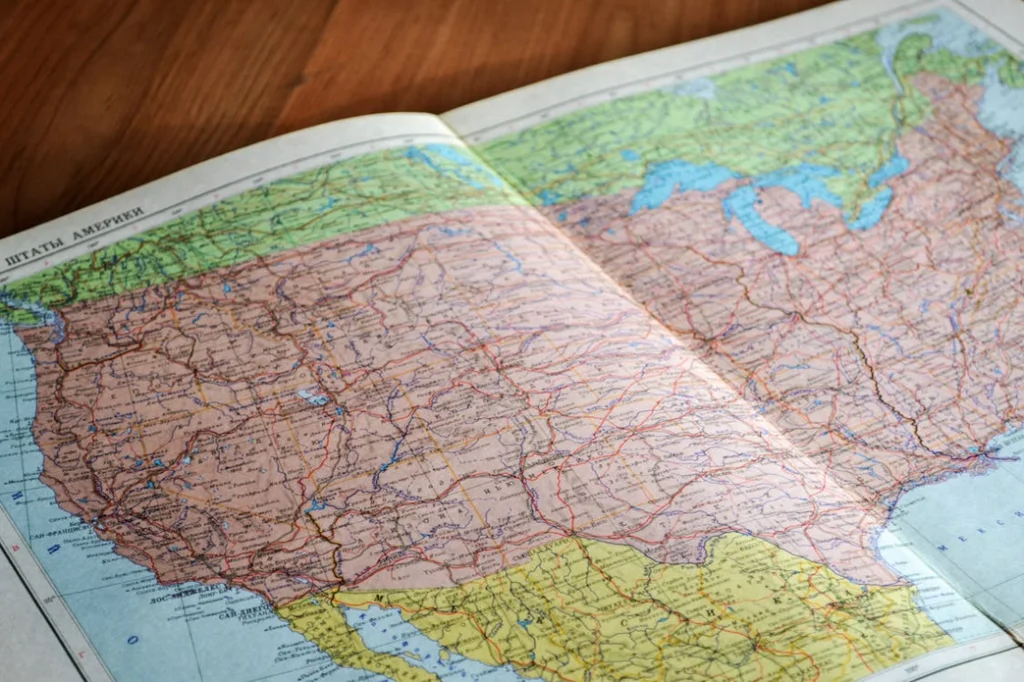
Those folded paper guides required planning, spatial reasoning, and the humility to occasionally stop and reassess when landmarks didn’t appear as expected. The navigator’s role in the passenger seat carried real responsibility, requiring concentration to follow along as streets passed and turns approached. The satisfaction of successfully arriving at a distant destination using only printed directions and attentive observation created genuine confidence in one’s wayfinding abilities.
The physical interaction with maps—unfolding them across kitchen tables for planning sessions, highlighting routes, writing notes in margins—engaged multiple senses in the journey preparation. Gas station attendants and local residents became valuable resources for course corrections and insider knowledge of traffic patterns or scenic detours. The well-worn creases of frequently consulted routes created a physical record of family adventures and regular pilgrimages to favorite destinations.
14. Trading and Organizing Baseball Card Collections

Those rectangular cardboard treasures served as both currency and education in the intricate world of sports statistics and player histories. Organizing principles varied—by team, position, year, or perceived value—but the methodical sorting process absorbed hours, especially on rainy summer afternoons. Duplicate cards became trading stock, with elaborate negotiations conducted over which combinations of commons might equal a single star player card.
Protecting special cards with plastic sleeves, arranging them in specially designed albums, and regularly consulting price guides to track changing values turned collecting into serious business. The tactile pleasure of flipping through carefully maintained collections, the distinctive smell of the cardboard and powdery gum, and the anticipation of opening new packs created a multisensory experience. Knowledge accumulated through these collections—batting averages, career highlights, roster changes—became social currency in playground and backyard conversations.
The beauty of these pre-digital pastimes wasn’t just their entertainment value, but how they connected us to each other and to our own creativity. While today’s technology offers undeniable convenience and instant gratification, there’s something sweetly nostalgic about recalling a time when we manufactured our own amusement from paper, imagination, and human interaction. Perhaps the greatest skill we developed during those screen-free years wasn’t any specific activity but our capacity to transform empty time into something meaningful, one paper fortune teller at a time.


